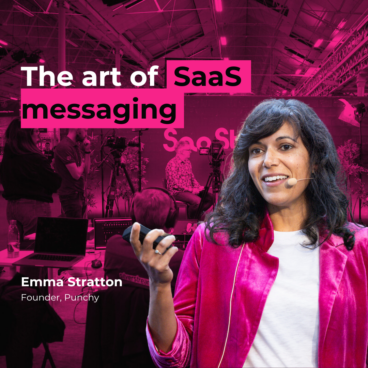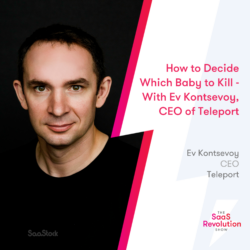It’s noisy out there for both SaaS businesses trying to sell and buyers looking for solutions.
For businesses: Trying to reach your ICP can feel like shouting into the void. And leading prospects to that ‘Aha’ moment, a pipe dream.
For buyers: Generic taglines and empty promises make it hard to find the solution that will actually solve the problem most effectively.
The key to success for both parties? Clear, impactful messaging.
In this interview, B2B SaaS messaging expert and Punchy.co Founder Emma Stratton talks through how to craft messaging that speaks to your ICP and boosts conversion, based on her work with over 1000 PMMs at companies like Atlassian and Salesforce.
Messaging vs. positioning
Messaging and positioning are core to any B2B SaaS GTM strategy but they are terms often used interchangeably, when there is a distinct difference between the two.
Emma’s definition of positioning is that it’s “making a decision as to what is your product, who it is for, and what is the ultimate unique value that they can expect from you”.
Messaging therefore is how you take that positioning strategy and “bring it to life through key messages and words that hopefully will help that defined audience see your unique value”.
For guidance on positioning, Emma recommends looking at April Dunford (Ambient Strategy)* whose book Obviously Awesome offers a step-by-step guide for positioning and bringing tech to market.
What does good SaaS messaging look like?
According to Emma, one of the most common problems with messaging is that companies “just start talking about themselves”. That is, they focus on the technology and what makes it great—at the expense of the problem being solved.
The issue here is that it forgets who the messaging is for, it becomes too inward facing and does not land.
“Good messaging” or messaging that resonates is born out of the problem it solves for the customer. You need to understand the pain and be able to talk about it honestly.
Tips for writing good messaging
So, how do you write good messaging? Here are Emma’s tips for connecting with your customers through words.
“For the last few years I’ve really preached more about being clear, using casual conversational language and using as few words as possible, but not forcing yourself to tiny word counts. But just try to be simple, human and real.”
Key things to remember:
- Speak like your customers: Talk about the problem you solve in language that your customers would use themselves.
- Scale it back: Emma sees a lot of companies trying to sound clever or stand out with puns and a play on words. But the risk is that, underneath the “jazz hands”, what’s written doesn’t really mean anything.
If and when to change your messaging
Emma advises her midmarket and enterprise clients to leave their messaging for at least six months before judging how it lands. For early stage companies, this jumps to a year (if nothing major has changed at a product or positioning level).
The main message here is that you “don’t have to constantly fiddle just to feel like you have control over something”. According to Emma, writing your messaging focused on the buyer will give your messaging more longevity.
“I worked with a Series B company on messaging and we really focused on being real and echoing the voice of their customer. They used their messaging for two years, without changing it, which is an eon in earlier stage years.”
Distributing your messaging
Solid messaging goes beyond copy on a homepage to support the company brand across channels and communication.
At the enterprise level companies she works with, Emma encourages cross-functional teams to be involved in the messaging process. She explained: “It helps with passing the message on to teams and departments”.
She also advises making it accessible with short messaging docs that people can easily digest and understand what’s important. From here, teams can “take it themselves and flex it and apply it, however they want to”.
What about AI-generated messaging?
Using AI to generate content and messaging is becoming commonplace but there are reasons to be wary. Emma has had consultancy clients use things like ChatGPT to shortcut their messaging but they aren’t happy when it comes back with jargon heavy, corporate wording.
For this, there’s a simple explanation:
“AI is regurgitating all the bad messaging. It’s spitting out ineffective messaging because it’s trained on a lot of ineffective messaging. Buzzwords… ‘leverage’ the big words that end with ‘tion’. All that kind of stuff that you see out there, that I talk about is getting gifted right back to people.”
In Emma’s view, the humans have some work to do before AI is up to the job: “In order for that to change, everyone else has got to have more simple, human messaging. That’s what I stand for, keeping it simple, human and real.”
Hear more from Emma in her book, Make it Punchy.





